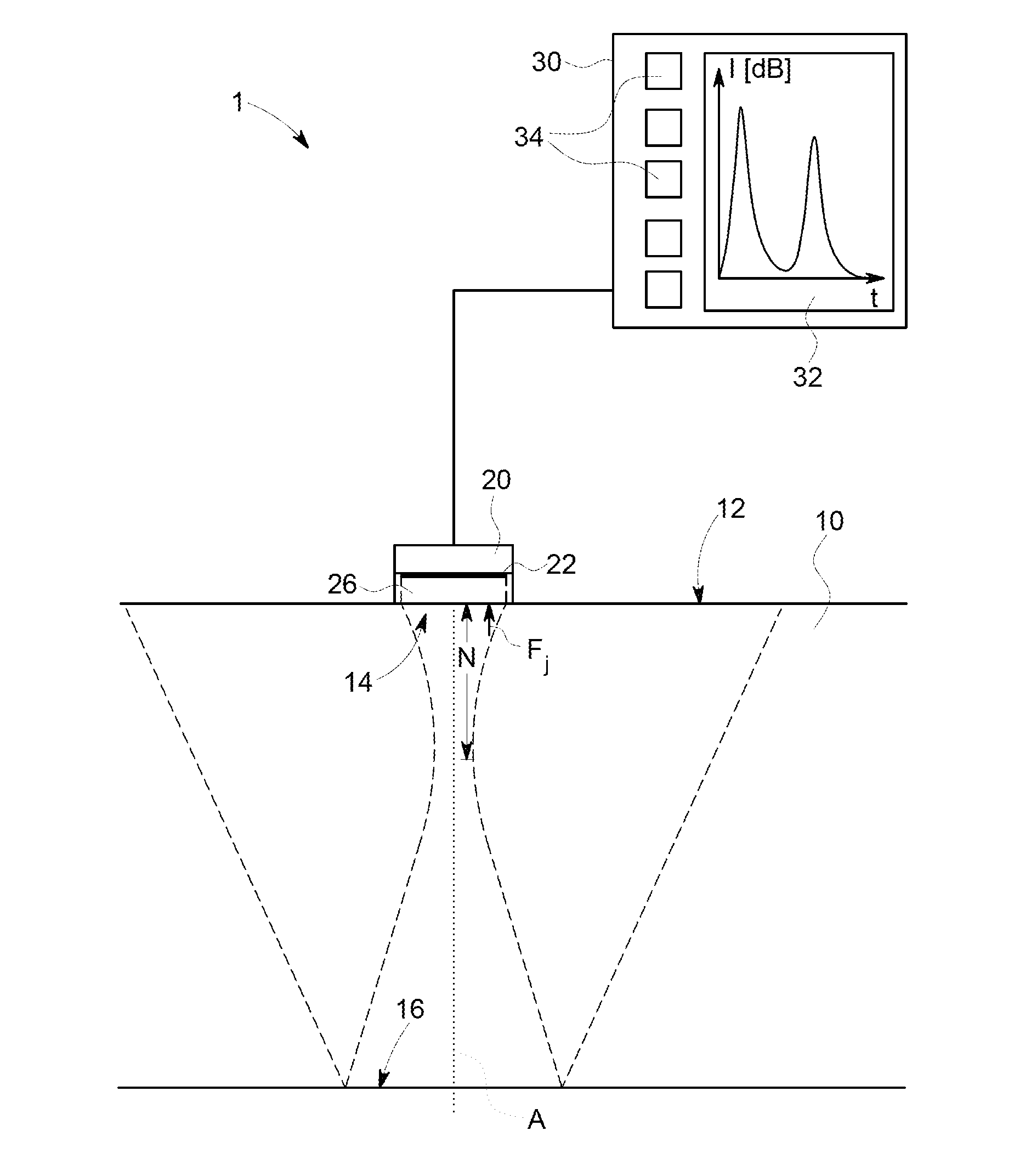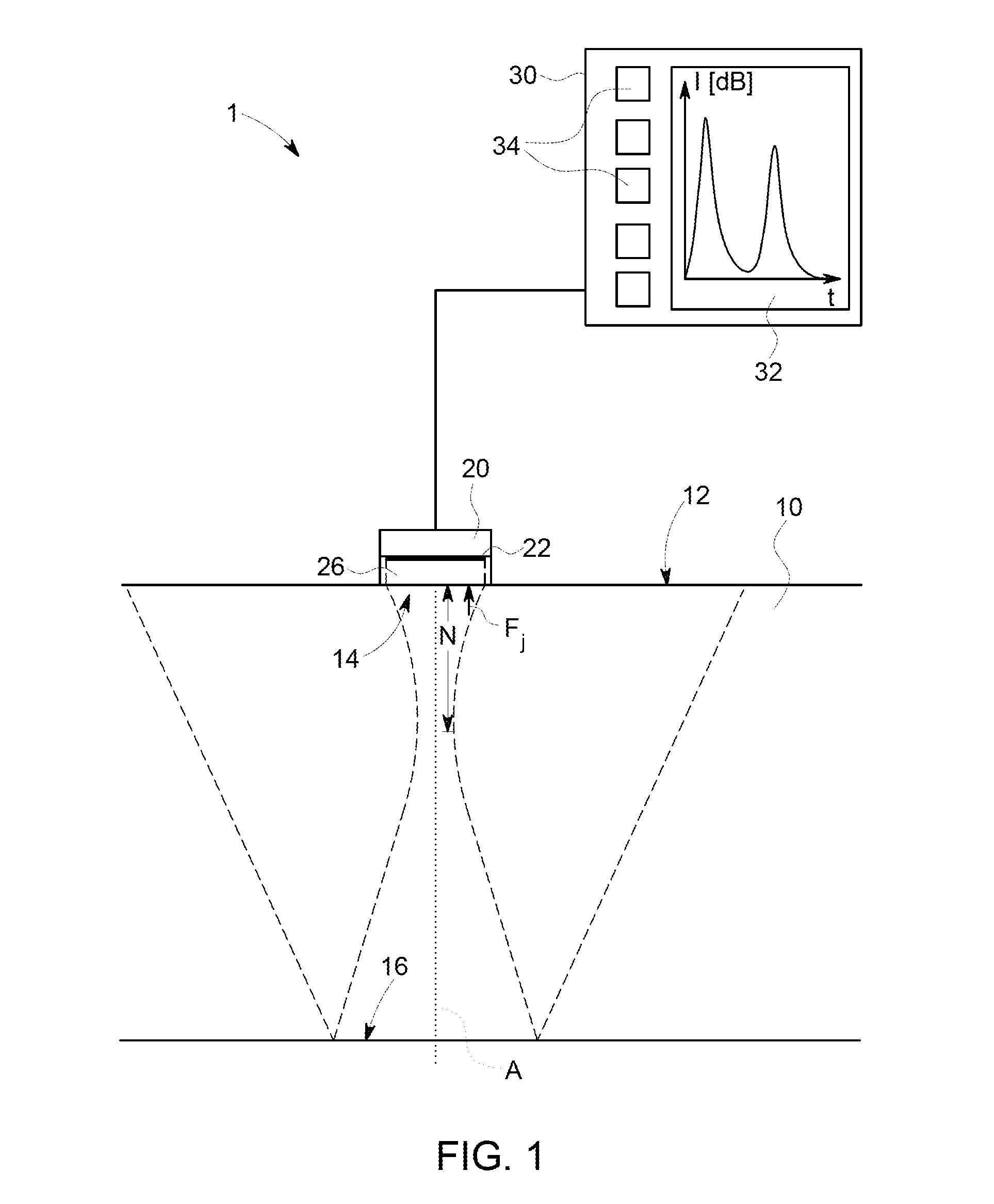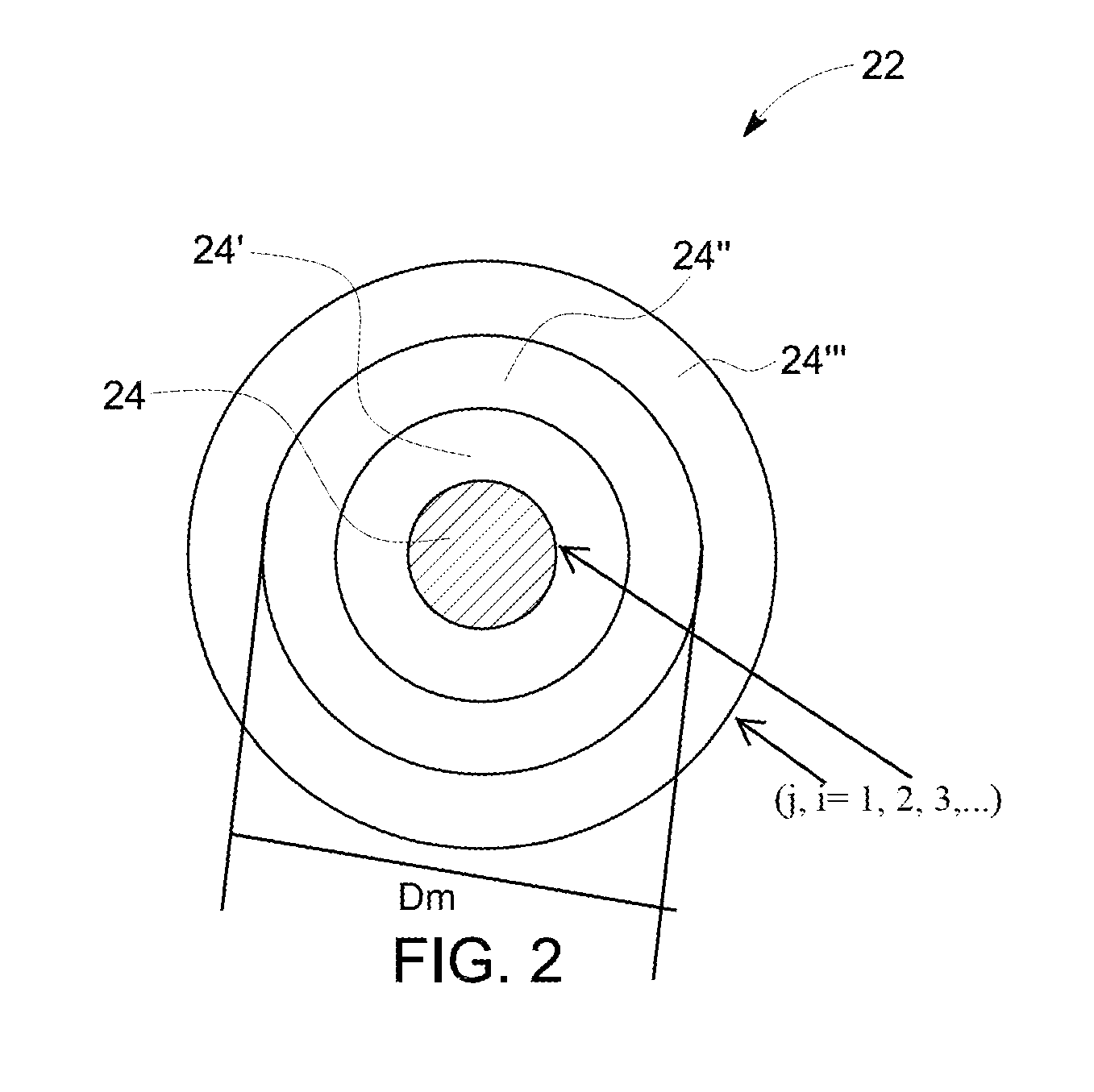Method for the non-destructive inspection of a test object of great material thickness by means of ultrasound, the use of a test probe for carrying out the method, an ultrasonic test probe, a control unit for an ultrasonic test probe and a device for the non-destructive inspection of a test object of great material thickness by means of ultrasound
a test object and non-destructive inspection technology, applied in the direction of ultrasonic/sonic/infrasonic wave generation, ultrasonic test probe control unit, and processing detected response signals, can solve the problems of not being suitable for detecting defects close to the surface, not being practicable in manual ultrasonic testing, and requiring a lot of effort. the effect of introducing the method
- Summary
- Abstract
- Description
- Claims
- Application Information
AI Technical Summary
Benefits of technology
Problems solved by technology
Method used
Image
Examples
Embodiment Construction
[0047]The device 1 shown schematically in FIG. 1 serves for the non-destructive inspection of a test object by means of ultrasound, wherein the test object 10 can have, in particular, a great material thickness S to be inspected. The device 1 comprises a control unit 30 which is electrically connected to an ultrasonic test probe 20. In turn, the ultrasonic test probe 20 comprises an ultrasonic transducer 22 disposed on a suitable leading body 26 which is provided to be placed upon a surface of the test object 10, which is hereinafter referred to as the coupling surface 12. The leading body 26 serves as a protection against wear and for acoustically coupling the ultrasonic transducer 22 to the test object 10; it can consist, for example, of Plexiglass®. In this case, the ultrasonic test probe 20 can be configured in such a way that it is manually guided by an examiner over the coupling surface 12 of the test object 10 so as to obtain information on structures in the material of the t...
PUM
| Property | Measurement | Unit |
|---|---|---|
| diameter | aaaaa | aaaaa |
| sound velocity | aaaaa | aaaaa |
| frequency | aaaaa | aaaaa |
Abstract
Description
Claims
Application Information
 Login to View More
Login to View More - R&D
- Intellectual Property
- Life Sciences
- Materials
- Tech Scout
- Unparalleled Data Quality
- Higher Quality Content
- 60% Fewer Hallucinations
Browse by: Latest US Patents, China's latest patents, Technical Efficacy Thesaurus, Application Domain, Technology Topic, Popular Technical Reports.
© 2025 PatSnap. All rights reserved.Legal|Privacy policy|Modern Slavery Act Transparency Statement|Sitemap|About US| Contact US: help@patsnap.com



